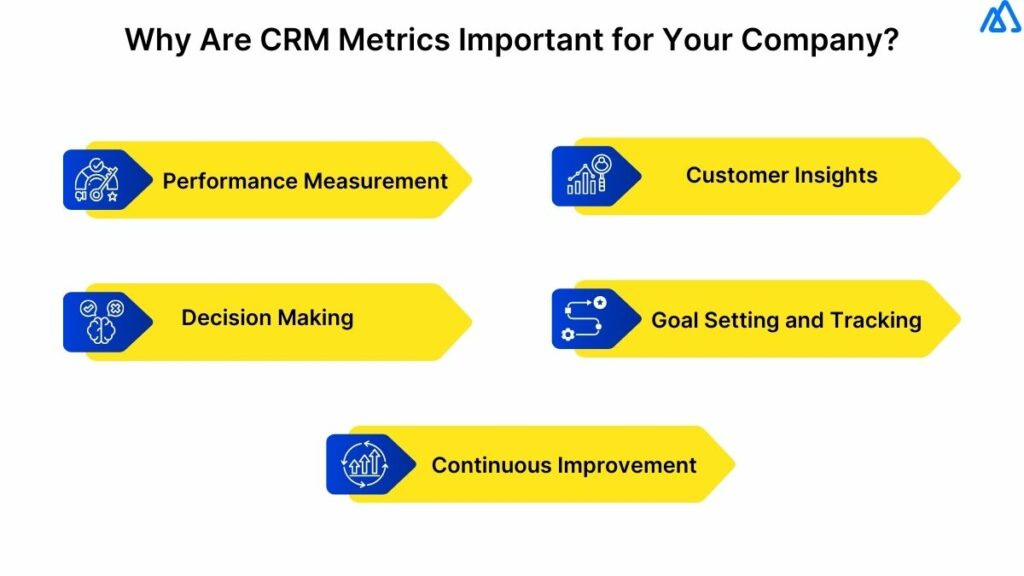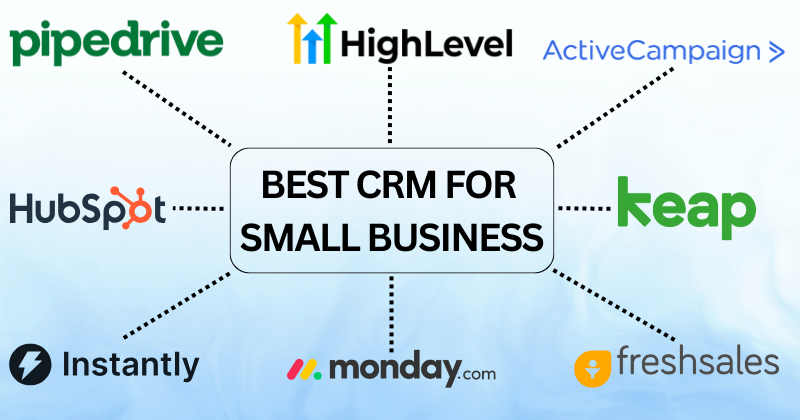
Unlocking Growth: A Comprehensive Guide to CRM Marketing Metrics
In the ever-evolving world of marketing, staying ahead of the curve requires more than just creativity and intuition. It demands a data-driven approach, and at the heart of this approach lies Customer Relationship Management (CRM) marketing. CRM marketing metrics are the compass that guides your strategy, helping you navigate the complex landscape of customer interactions and marketing campaigns. This comprehensive guide delves into the essential CRM marketing metrics, offering insights into their significance, how to track them, and how to leverage them to fuel growth and enhance customer relationships.
What are CRM Marketing Metrics and Why Do They Matter?
CRM marketing metrics are quantifiable measurements that assess the effectiveness of your marketing efforts within your CRM system. They provide a clear picture of how your campaigns are performing, how customers are interacting with your brand, and ultimately, how these interactions contribute to your bottom line. Without these metrics, you’re essentially flying blind, making decisions based on guesswork rather than concrete evidence.
The importance of CRM marketing metrics stems from several key benefits:
- Improved Decision-Making: Metrics provide data-backed insights that enable you to make informed decisions about your marketing strategies, resource allocation, and campaign optimization.
- Enhanced Customer Understanding: By tracking customer behavior and preferences, you gain a deeper understanding of your target audience, allowing you to personalize your marketing efforts and create more relevant experiences.
- Increased ROI: Metrics help you identify what’s working and what’s not, allowing you to focus your resources on the most effective campaigns and maximize your return on investment (ROI).
- Streamlined Processes: By analyzing metrics, you can identify inefficiencies in your marketing processes and streamline them for improved productivity and efficiency.
- Better Customer Relationships: Metrics provide insights into customer satisfaction and loyalty, enabling you to proactively address issues and build stronger relationships.
Key CRM Marketing Metrics to Track
The specific metrics you track will depend on your business goals and the nature of your marketing campaigns. However, some key metrics are universally important for understanding the performance of your CRM marketing efforts. Here are some of the most critical ones:
1. Customer Acquisition Cost (CAC)
Customer Acquisition Cost (CAC) measures the total cost of acquiring a new customer. It’s calculated by dividing the total marketing and sales expenses by the number of new customers acquired during a specific period. Understanding your CAC is crucial for assessing the efficiency of your marketing efforts and ensuring that your customer lifetime value (CLTV) exceeds your acquisition costs.
How to Calculate CAC:
CAC = (Total Marketing & Sales Expenses) / (Number of New Customers Acquired)
Why it Matters:
- Helps you determine the profitability of your marketing campaigns.
- Allows you to optimize your marketing spend by identifying the most cost-effective channels.
- Provides insights into the efficiency of your sales and marketing processes.
2. Customer Lifetime Value (CLTV)
Customer Lifetime Value (CLTV) predicts the total revenue a customer will generate throughout their relationship with your business. It’s a critical metric for understanding the long-term value of your customers and making informed decisions about customer retention strategies. A higher CLTV indicates that your customers are loyal and generate significant revenue over time.
How to Calculate CLTV (Simplified):
CLTV = (Average Purchase Value) * (Average Purchase Frequency) * (Average Customer Lifespan)
Why it Matters:
- Helps you prioritize customer retention efforts.
- Provides insights into the profitability of your customer base.
- Enables you to justify investments in customer service and loyalty programs.
3. Conversion Rate
Conversion rate measures the percentage of leads who complete a desired action, such as making a purchase, filling out a form, or requesting a demo. It’s a crucial metric for assessing the effectiveness of your marketing campaigns and identifying areas for improvement in your sales funnel. A higher conversion rate indicates that your marketing efforts are successfully driving leads to take the desired action.
How to Calculate Conversion Rate:
Conversion Rate = (Number of Conversions) / (Number of Leads) * 100
Why it Matters:
- Helps you understand the performance of your marketing campaigns.
- Allows you to optimize your website and landing pages for conversions.
- Provides insights into the effectiveness of your sales funnel.
4. Customer Churn Rate
Customer churn rate measures the percentage of customers who stop doing business with your company during a specific period. It’s a critical metric for assessing customer loyalty and identifying areas for improvement in customer service and retention efforts. A high churn rate indicates that you’re losing customers at a significant rate, which can negatively impact your revenue and profitability.
How to Calculate Churn Rate:
Churn Rate = (Number of Customers Lost) / (Total Number of Customers at the Beginning of the Period) * 100
Why it Matters:
- Helps you identify issues with customer satisfaction and loyalty.
- Allows you to proactively address customer concerns and prevent churn.
- Provides insights into the effectiveness of your customer retention strategies.
5. Customer Satisfaction (CSAT) Score
Customer Satisfaction (CSAT) score measures the level of satisfaction customers have with your products, services, or overall experience. It’s typically measured through customer surveys and feedback forms. A high CSAT score indicates that your customers are satisfied with their experience, which can lead to increased loyalty and positive word-of-mouth referrals.
How to Calculate CSAT (Example):
Average score of all the CSAT surveys.
Why it Matters:
- Provides insights into customer sentiment and loyalty.
- Allows you to identify areas for improvement in customer service and product development.
- Helps you build stronger customer relationships.
6. Net Promoter Score (NPS)
Net Promoter Score (NPS) measures customer loyalty and advocacy. It’s based on a single question: “How likely are you to recommend our company/product/service to a friend or colleague?” Customers respond on a scale of 0 to 10. NPS is a valuable metric for gauging customer loyalty and predicting future growth.
How to Calculate NPS:
- Promoters (9-10): Loyal enthusiasts who will keep buying and referring others.
- Passives (7-8): Satisfied but unenthusiastic customers who are vulnerable to competitive offerings.
- Detractors (0-6): Unhappy customers who can damage your brand and impede growth.
NPS = % Promoters - % Detractors
Why it Matters:
- Provides a clear measure of customer loyalty and advocacy.
- Helps you identify areas for improvement in customer experience.
- Predicts future growth and revenue.
7. Email Marketing Metrics
Email marketing remains a powerful tool for nurturing leads, driving conversions, and building customer relationships. Tracking the following email marketing metrics is crucial for optimizing your email campaigns:
- Open Rate: The percentage of emails that are opened by recipients.
- Click-Through Rate (CTR): The percentage of recipients who click on a link in your email.
- Conversion Rate: The percentage of recipients who complete a desired action after clicking a link in your email.
- Bounce Rate: The percentage of emails that fail to be delivered.
- Unsubscribe Rate: The percentage of recipients who unsubscribe from your email list.
Why it Matters:
- Helps you understand the effectiveness of your email subject lines and content.
- Allows you to optimize your email campaigns for conversions.
- Provides insights into the engagement of your email subscribers.
8. Website Traffic and Engagement Metrics
Your CRM system can often integrate with your website analytics to provide valuable insights into customer behavior on your website. Tracking these metrics is essential for understanding how customers interact with your website and how it contributes to your marketing goals:
- Website Traffic: The number of visitors to your website.
- Page Views: The number of pages viewed on your website.
- Bounce Rate: The percentage of visitors who leave your website after viewing only one page.
- Time on Site: The average amount of time visitors spend on your website.
- Conversion Rate: The percentage of website visitors who complete a desired action, such as filling out a form or making a purchase.
Why it Matters:
- Helps you understand how customers are interacting with your website.
- Allows you to optimize your website for conversions.
- Provides insights into the effectiveness of your website content and design.
How to Track CRM Marketing Metrics
Tracking CRM marketing metrics requires a combination of tools and strategies. Here’s a step-by-step guide:
1. Choose the Right CRM System
The foundation of your CRM marketing efforts is a robust CRM system. Choose a system that offers comprehensive reporting and analytics capabilities, as well as integrations with other marketing tools. Consider factors such as:
- Features: Does the CRM offer all the features you need, such as lead management, contact management, sales automation, and marketing automation?
- Integrations: Does the CRM integrate with your other marketing tools, such as email marketing platforms, website analytics tools, and social media platforms?
- Scalability: Can the CRM system scale to meet your future needs as your business grows?
- User-Friendliness: Is the CRM easy to use and navigate for your team?
2. Define Your Key Performance Indicators (KPIs)
Before you start tracking metrics, define your Key Performance Indicators (KPIs). These are the specific metrics that are most important for measuring the success of your marketing efforts. Your KPIs should align with your business goals and objectives.
3. Set Up Tracking and Reporting
Once you’ve chosen your CRM system and defined your KPIs, set up tracking and reporting. This involves configuring your CRM system to collect the data you need and generating reports that provide insights into your marketing performance. Most CRM systems offer built-in reporting features, but you may need to integrate with other tools, such as Google Analytics, to track all the necessary data.
4. Analyze and Interpret the Data
Regularly analyze and interpret the data collected through your CRM system. Identify trends, patterns, and insights that can inform your marketing strategies and decision-making. Look for areas where you can improve your performance and optimize your campaigns.
5. Take Action and Optimize
Based on your analysis, take action to optimize your marketing efforts. This may involve adjusting your targeting, refining your messaging, or changing your campaign strategies. Continuously test and iterate to improve your performance over time. Regularly review your metrics and make adjustments as needed.
Tools for Tracking CRM Marketing Metrics
Several tools can help you track and analyze your CRM marketing metrics. Here are some of the most popular:
- CRM Systems: Most CRM systems, such as Salesforce, HubSpot, Zoho CRM, and Microsoft Dynamics 365, offer built-in reporting and analytics capabilities.
- Google Analytics: A powerful web analytics tool that provides insights into website traffic, user behavior, and conversion rates.
- Email Marketing Platforms: Platforms like Mailchimp, Constant Contact, and Sendinblue provide detailed analytics on email open rates, click-through rates, and conversion rates.
- Marketing Automation Platforms: Platforms like HubSpot, Marketo, and Pardot offer advanced analytics and reporting features for tracking the performance of your marketing automation campaigns.
- Spreadsheet Software: Tools like Microsoft Excel and Google Sheets can be used to create custom reports and dashboards for tracking your CRM marketing metrics.
Best Practices for Using CRM Marketing Metrics
To get the most out of your CRM marketing metrics, follow these best practices:
- Set Clear Goals and Objectives: Define your marketing goals and objectives before you start tracking metrics. This will help you focus on the most important metrics and measure your progress effectively.
- Choose the Right Metrics: Select the metrics that are most relevant to your business goals and objectives. Don’t try to track too many metrics, as this can be overwhelming and make it difficult to focus on what matters most.
- Track Consistently: Track your metrics consistently over time to identify trends and patterns. This will help you understand the impact of your marketing efforts and make informed decisions.
- Analyze Regularly: Regularly analyze your metrics to identify areas for improvement and optimize your campaigns. Don’t wait until the end of a campaign to review your results.
- Take Action and Iterate: Based on your analysis, take action to optimize your marketing efforts. Continuously test and iterate to improve your performance over time.
- Automate Reporting: Automate your reporting process to save time and ensure that you’re tracking your metrics consistently.
- Share Your Findings: Share your findings with your team and stakeholders to ensure that everyone is aligned on your marketing goals and objectives.
The Future of CRM Marketing Metrics
The landscape of CRM marketing is constantly evolving, and so are the metrics that matter. As technology advances and customer behavior changes, new metrics will emerge, and existing metrics will become even more important. Here are some trends to watch:
- Artificial Intelligence (AI): AI will play an increasingly important role in CRM marketing, enabling businesses to automate tasks, personalize customer experiences, and gain deeper insights from their data.
- Predictive Analytics: Predictive analytics will be used to forecast customer behavior and predict future trends, allowing businesses to proactively address customer needs and optimize their marketing efforts.
- Personalization: Personalization will become even more important as customers expect more relevant and tailored experiences.
- Data Privacy: Data privacy will continue to be a major concern, and businesses will need to be transparent about how they collect and use customer data.
Conclusion
CRM marketing metrics are essential for driving growth, improving customer relationships, and maximizing your ROI. By tracking the right metrics, analyzing the data, and taking action to optimize your marketing efforts, you can achieve significant results. Embrace the power of data, stay informed about the latest trends, and continuously refine your approach to achieve lasting success in the dynamic world of CRM marketing.


